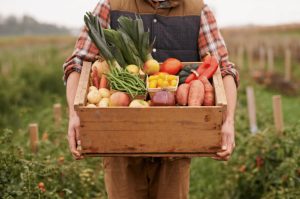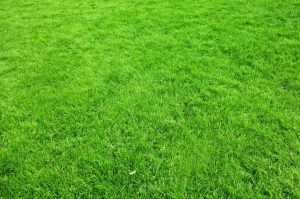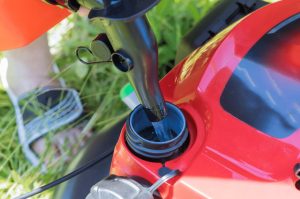If you’ve ever dreamt about growing capsicums in your Melbourne backyard, this comprehensive guide is just for you. Drawing from the wealth of information available, including resources like this detailed guide on what to plant now in Melbourne, I’m thrilled to share the knowledge I have accumulated over the years. From understanding Melbourne’s unique climate to knowing when and how to plant capsicums, from troubleshooting common issues and pests all the way up to sealing the deal with a successful harvest- we’re going on an enriching journey together.
So put your gardening gloves on as we delve deep into everything about our star of the show today – the luscious capsicum!
Understanding Melbourne’s climate
First, let’s get into Melbourne’s climate, which is crucial for growing capsicums. The city typically witnesses a temperate oceanic climate marked by moderate heat during summers and chilly winds in winters. This unique climatic setting positions itself at an advantage in capsicum cultivation – quite a relief!
There are stable high temperatures (around 25°C) spanning across December through February, the type of warmth mandatory for healthy capsicum growth. Nevertheless, those cooler months lurking towards June can cause some hindrance if not properly managed. But fear not! That’s precisely why this detailed guide exists – to arm you with the necessary tricks and tips.
Keeping up-to-date with these temperature nuances will be essential to excel in your capsicum growing endeavour. Let’s not forget how regional geographic differences might slightly deviate microclimates within home gardens.
In short, that pleasant summer warmth coupled with timely intervention against colder conditions is key for prospering Capsicums amidst Melbourne’s distinctive weather patterns.
When to plant capsicum in Melbourne
As experts, we recommend planting capsicums between the end of August and November in Melbourne. Seeing that Melbourne is known for having four seasons in one day, getting the timing right for your planting can determine how successful your outcome will be.
For instance, it’s relatively warm during springtime but not too hot. This climate balance provides an ideal environment for capsicum seed germination with just the right temperature — not excessively cold like winter nor scorchingly hot as in summer. Remember that these plants love warmth; subsequently, you’ll want to ensure soil temperatures remain above 16 degrees Celsius throughout their growth process.
Take advantage of Melbourne’s temperate maritime climate, characterised by mild winters and warm summers. Its extended cool season often allows prolonged growing periods for crops such as capsicum—making it a suitable city for cultivating this crop. A useful tip will also be choosing speedy maturing varieties of your preferred capsicums if you’ve started late or if weather conditions are unpredictable.
Companion planting ideas
Companion planting is about combining particular plants that mutually benefit each other within proximity.
Regarding growing tomatoes next to your robust capsicums, it’s a ‘grows together goes together’ phrase brought to life from the garden to your plate! Both plants thrive under similar conditions, making them fantastic neighbours.
Another exciting brigade against pests includes integrating herbs like basil or parsley into your vegetable patch—they reportedly deter pests who’d initially lug around your appetising capsicums sneakily!
Moreover, I’d suggest brushing shoulders between beans and peas with tenderly cared-for capsicums because legumes create nitrogen-rich soil, supporting capsicum’s abundant growth. This natural fertilisation might be exactly what your plants need to flourish.
However, some associates may not appreciate a closely-knit garden community. For instance, avoid placing fennel or fruit trees close enough that their exuding substances dramatically interfere with your vibrant-coloured capsicums.
Just remember that every slight tip or trick can significantly enhance the success of your harvest when it comes to growing capsicum in Melbourne!
How to plant capsicum for Melbourne gardens
Growing capsicums (bell peppers) isn’t complicated, and they flourish well in Melbourne’s climate. However, achieving bountiful harvests requires going beyond just planting the seedlings.
Here are some fundamental aspects to consider.
Choosing the right location
Promoting your capsicum growth begins with selecting an appropriate location. These plants love sunshine; at least 6 hours per day is ideal. An open space that receives full sun would be fantastic for growing capsicums as it would play nicely into their energy needs for photosynthesis.
Avoid low-lying areas where water tends to collect, causing soggy land. Also, shield your plants from strong winds because they can damage delicate stems and leaves or interfere with pollination.
Preparing soil and pH level
An essential step of growing capsicum is improving the soil quality for optimum yield. These vegetables prefer well-draining soil enriched with organic matter—compost or well-rotted manure should do the trick.
Equally important is their liking towards slightly acidic soils of about pH 6 – 6.8. If you’re unsure about your garden soil’s acidity level, take a sample to a local nursery for testing or get yourself a DIY soil test kit.
Spacing
Having taken care of the ‘where’ and ‘what type of soil’, then comes spacing—how far apart should capsicum plants be?
You’ve got two options depending on how you plan to grow them:
- Traditional garden beds: Space them about 45–60cm apart each way.
- Pots/containers: Use pots around 40cm in diameter for each plant.
Balance is key here as too much crowd might inhibit sunlight access. At the same time, too little may prove inefficient watering-wise due to sparse plant distribution.
Planting tips
When it comes to planting, patience is a virtue. Wait until the overnight temperatures consistently remain above ten degrees Celsius before transplanting your seedlings outdoors. Capsicums are frost-sensitive and prone to “transplant shock” when moved into overly cold or hot conditions, so choose an overcast day, if possible.
Another handy tip is hardening off—gradually acclimating plants inside for about 10-14 days before introducing them outdoors—to improve their survivability rate.
Watering and fertilisation
Your capsicum plants need regular watering to thrive, at least once daily during dry spells and less frequently in wet weather. Note that unchecked waterlogging can lead to root rot diseases.
Implement a balanced fertilisation routine, starting with a high nitrogen fertiliser at planting time, then shifting towards a higher potassium-based one as flowering sets in. This transition helps encourage healthy leaf growth initially while bolstering fruit setting and development later.
Remember, over-fertilisation might result in luxuriant leaves but poor fruit production. So, always follow the manufacturer’s instructions for application rates.
Growing capsicums in a pot
Often, garden space can be a limitation for many green enthusiasts. Fear not! Growing capsicums in pots is an excellent way to indulge your gardening hobby without requiring expansive grounds. The best part about it is that it’s surprisingly simple to do, especially when catering to the unique climate of Melbourne.
To kickstart your potted capsicum journey, pick the right pot. I suggest opting for a medium-sized (around 30 cm in diameter) plastic or terracotta container with sufficient drainage holes at its base. A well-draining pot ensures that excess water doesn’t stagnate around your capsicum roots; this prevents overwatering and root rot. It also offers ample room for our capsicum plant’s vigorous root system.
Once you’ve found the perfect pot, it’s time to gather some high-quality potting mix. While selecting soil, opt for light and well-drained options enriched with organic matter like compost or rotted manure. Your aim should be creating a hospitable environment for growth where roots can easily spread and access the nutrients they need.
Now, let’s talk about planting:
- Fill up your selected container almost halfway with pro-grade potting soil
- Place the young capsicum plant gently into the pot
- Refill the rest of the pot with more soil until it is roughly 2.5cm from the rim.
Following these guidelines helps create vital space necessary for watering while ensuring the stability of your growing capsicum plant.
Remember, even though we’re growing capsicums in pots sheltered from diverse weather conditions, their requirement for sunlight doesn’t change. Most of us know that healthy capsicum plants crave full sun exposure; thus, positioning them on balconies or sunny patios leading to productive yield becomes essential.
Finally, remember that potted plants typically rely more heavily on regular feeding and watering than their in-ground counterparts. Therefore, diligently attending to these watering needs whilst appropriately balancing sunlight exposure sets you on the path to fruitful capsicum harvest right from your balcony!
If you’re wondering how long capsicum plants last, they can produce for up to three seasons with proper care, even under Melbourne’s temperate climate conditions.
Ongoing care and maintenance
Successfully growing capsicum doesn’t end at planting; caring for the plant is paramount to reap the desired harvest. Like any other plant, regular attention helps spot early signs of problems, allowing effective correctives to come into action.
An enormous part of caring for your capsicums includes:
- Monitoring plant growth visibly or physically
- Regular hydration
- Feeding your plants nutrients
- Spotting pest infestation or diseases.
Devoted gardening involves comprehensive ongoing maintenance practices promoting healthier growth while inhibiting potential threats.
Troubleshooting growing issues
Capsicum plants are resilient, but with resilience comes vulnerability. Common hiccups encountered during growth can be easily intervened with timely response and appropriate measures.
Some common growth issues we’ve encountered include:
- Watering balance: Leaf wilting, a common issue, often stems from either underwatering or overwatering the plants.
- Nutrient deficiencies: Brown leaves indicate a lack of potassium, while yellow leaves suggest either overwatering or a nitrogen shortage.
- Blossom rots: These can emerge due to calcium deficiencies and inconsistent moisture levels, but they can be addressed with the right soil amendments and watering practices.
Promptly troubleshooting trivial issues in growing capsicum ensures their complete life cycle results in successful cultivation- from flowering to fruition.
Common pest and diseases in melbourne
Growing capsicum in Melbourne has its fair share of challenges, including pests and diseases that threaten production yield. The most recurrent pests encompass aphids and caterpillars. The former are tiny insects sucking sap, causing curling leaves. At the same time, the latter feed intensely on foliage, slowing down growth rates considerably.
Fungal diseases such as phytophthora stem rot cause significant damage, eventually turning stems brown and leading to wilt if not addressed soon enough. Another menacing disease worthy of awareness: bacterial spot characterised initially by small raised spots appearing water-soaked and later multiplied throughout the leaves, extending to fruits at its peak.
Remember, early detection and timely action can keep your capsicum plants thriving despite these challenges. Use targeted treatments after identification for effective control.
When and how to harvest capsicum
Let’s dive into the exciting part of growing capsicum in Melbourne: harvesting! Having patiently tended your capsicum plants until they bear fruit, it’s crucial to know when and how to harvest them for maximum flavour and nutritional value.
Timing is key in the harvesting process. Generally, it would be best to let your capsicum stay on the plant for as long as possible. The best indicator is colour; ripe capsicum typically changes from green to red or even yellow depending on the variety—expect this transition around 75 – 90 days after planting. However, if you prefer milder flavours, feel free to pick them while they’re still green.
Now comes the “how”. Use sharp gardening scissors or pruners for clean cuts to safely remove capsicum without injuring the stems or adjacent fruits. Cut through the stem about 1-2 cm above the fruit cap. Keep an eye out for fruits that are firm to the touch and sport vibrant hues—an obvious sign of their readiness for picking!
Lastly, remember:
- Regular harvesting encourages further production.
- Avoid pulling or twisting off the peppers bare-handed.
Storage tips
Post-harvest storage makes a significant difference in preserving your capsicums’ freshness and taste quality. Here are some tried-and-tested tips I’ve found helpful throughout my gardening journey.
- For short-term storage (up to two weeks): place unwashed capsules in disposable plastic bags inside your refrigerator’s crisper drawer—a combination offering just-right humidity levels that help retain crispiness.
- Long-term storage (months): Consider freezing. First, wash your harvested goodness under running water, allow them to dry completely before slicing them into strips or dice—they freeze better this way than whole—and transfer them into air-tight freezer bags.
However, should surplus be bountiful enough that frozen storage runneth over, consider the time-honoured technique of pickling your capsicums. Whether consumed as garnishings or sandwich fillers, they boost flavour while extending shelf life.
Each storage type has advantages, so choose based on individual preference and necessity. But regardless of the method you opt for, remember initial prep is vital—always ensure your peppers are dust-free before storage; no one likes dirty crisps!
Final thoughts
Growing capsicums in Melbourne might seem daunting initially, but with the right knowledge, such as what you’ve gained from this guide and others like our guide on growing potatoes, the process becomes more straightforward. These vibrant vegetables offer a diverse range for your culinary delights and a rewarding gardening experience. Key factors like location, soil quality, and pest management play a pivotal role in ensuring a successful harvest. As you nurture these plants, the joy of handpicking fresh capsicums from your garden becomes a testament to your dedication. In essence, with determination and the right insights, you can look forward to bountiful capsicum harvests right in your Melbourne backyard.
FAQs
What month do you plant capsicum?
I recommend planting capsicum seeds as early as September when temperatures rise after winter in Melbourne. This allows your plants to establish themselves before the warmer summer season kicks in. While you can extend planting until December, keep an eye on typical temperature trends: capsicums require a longer growing season and thrive in warmer climates. Remember that timing is crucial for successful capsicum growth.
Do capsicums need full sun?
Yes, indeed! Capsicums are sun-loving vegetables. They crave six to eight hours of direct sunlight daily for robust growth and ample fruit production. This is why choosing the right location with maximum sunlight exposure is essential when growing capsicum. However, remember that, like any other plant, they also need periods of coolness or shade to prevent scorching and dehydration during especially hot days.
Can you grow capsicum all year round?
Since Melbourne’s climate has colder winters and hot summers, continual outdoor cultivation may challenge continuous capsicum growth. The traditional approach revolves around planting them annually from late winter through spring (as indoor seedlings) or directly out in autumn or early summer post-last frost.







